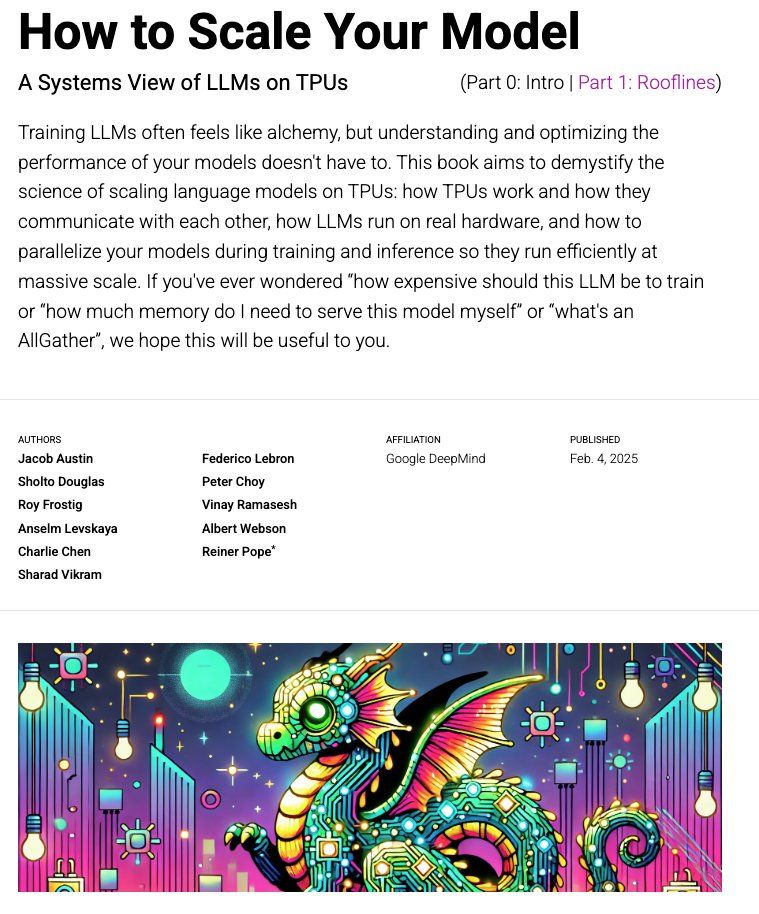If you want to learn more, see this awesome book "How to Scale Your Model":
jax-ml.github.io/scaling-book/
Put together by several of my Google DeepMind colleagues listed below 🎉.

If you want to learn more, see this awesome book "How to Scale Your Model":
jax-ml.github.io/scaling-book/
Put together by several of my Google DeepMind colleagues listed below 🎉.


